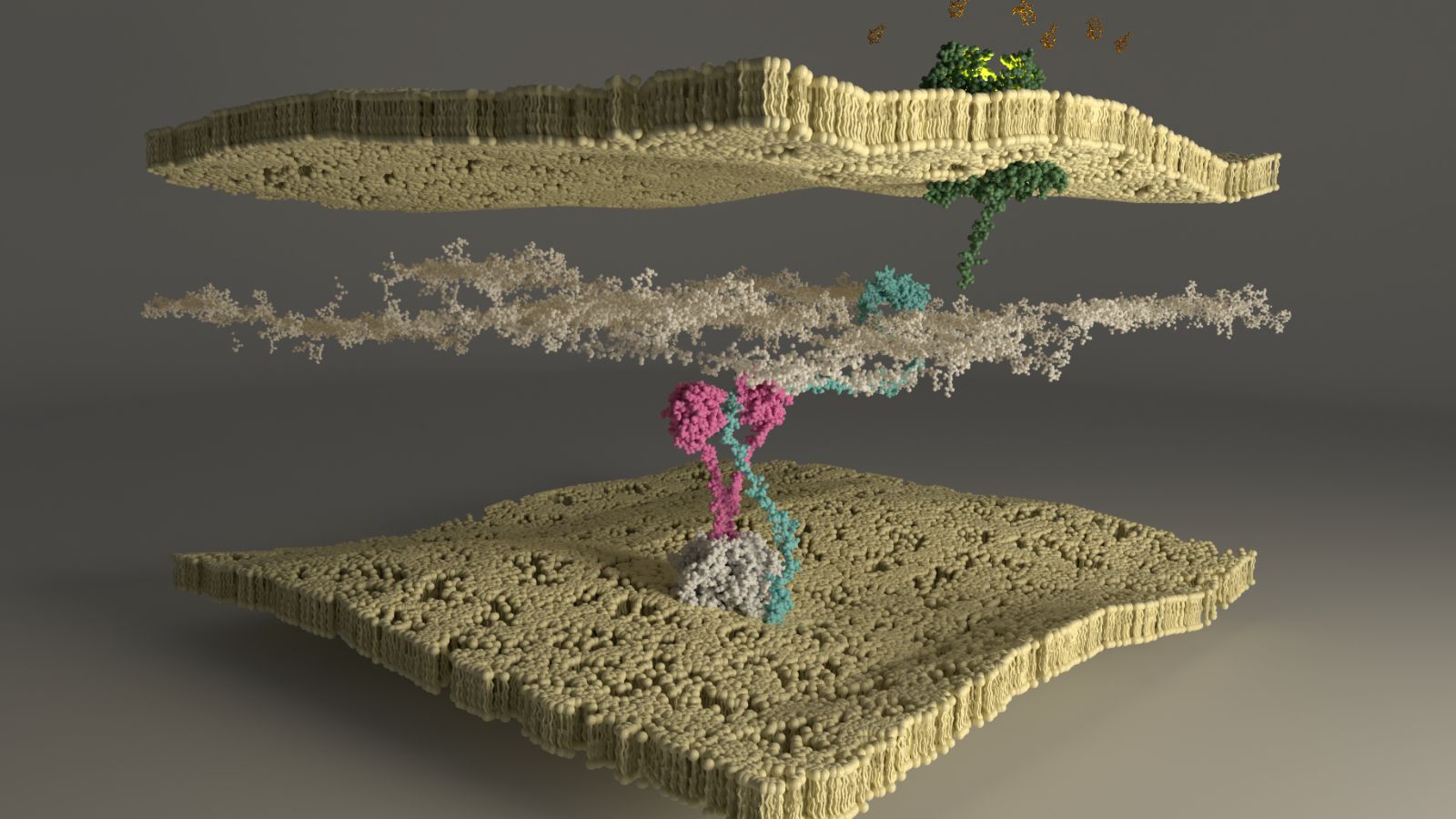Follow us on Google News (click on ☆)

Image Maximilian Zinke
Bacteria acquire their nutrients from their environment and their host. The dual-membrane organization (outer and inner membranes) of so-called Gram-negative bacteria forms a barrier against the entry of molecules, whether they are nutrients necessary for their survival or antibiotics. To overcome this barrier, bacteria have developed specialized transport systems, such as the Ton system, which ensures the importation of vital nutrients such as iron, nickel, vitamin B12, and certain sugars.
Molecular Motors Acting Like Mills
The Ton system consists of a specific transporter located on the surface of bacteria and a molecular motor in the inner membrane. Once the nutrient is recognized and attached by the transporter, its entry requires the opening of a channel through this last. This process draws its energy from molecular motors acting like mills. These mills convert chemical energy (from the proton gradient) into mechanical energy, thus allowing the entry of the nutrient. Moreover, other mills, with the same structure and organization, are involved in other mechanical processes on the surface of bacteria, such as motility and maintaining the integrity of the envelope.
Despite the essential role of the Ton system for the survival of double-membrane bacteria, as well as its potential as an antimicrobial target, critical aspects of its mechanism remain poorly understood, mainly due to a lack of structural data. This gap is due not only to the complex architecture of the system that crosses the bacterial envelope, but also to the dynamics of its elements and their interactions.
Nuclear Magnetic Resonance, An Essential Tool for Understanding Certain Biological Mechanisms
Recently, cryo-electron microscopy has allowed for the partial determination of the structure of several Ton molecular motors. However, parts of these structures remain unknown, notably the central domain, essential for distributing energy to the nutrient transporter on the surface of bacteria through a mechanism until now not elucidated.
In this study published in the journal Nature Communications, scientists have determined the atomic structure of this domain using nuclear magnetic resonance (NMR) technique. They thus discover the existence of this domain in two states, closed or open, on a timescale ranging from microseconds to milliseconds. NMR is a cutting-edge spectroscopic technique based on the magnetic properties of the nuclei of atoms undergoing an extremely strong magnetic field (here more than 400,000 times the earth's field). Its contribution lies in its unique ability to provide atomic-scale structural and dynamic information under physiological conditions. Its combination with other structural biology technologies such as cryo-electron microscopy and X-ray crystallography is essential for understanding dynamic and complex machineries such as the Ton system.
In this animation showcasing a bacterial envelope, we can observe the nutrients (golden/brown) outside the bacterial membrane, and the membrane receptor (green) serving as the entry gate in the membrane. The key protein (pink), part of the molecular motor or mill, provides the energy to bring these nutrients inside. The turquoise protein is the relay between the molecular motor and the receptor. The rigid quill (white) of the cellular wall, between both membranes, also plays an essential role as a catalyst.
A Mechanism That Seems Universal for Designing New Antibiotic Strategies
With this new technology, scientists have shown that only the open state is active, and capable of interacting with other components of the system, involved in the internalization of the nutrient. Further experiments have revealed that the transition between the two states are indispensable for the importation of nutrients and the survival of bacteria. Moreover, the study demonstrates for the first time the catalytic role of the rigid mesh of the bacterial wall, which makes energy transfer efficient.
The mechanism discovered in this study appears to be universal, as evidenced by its demonstration in two distinct Ton systems: one dedicated to a specific iron source transporter, the other generalist and capable of interacting with various nutrient transporters. Furthermore, the regions of the proteins involved in the transition between the two states are highly conserved among bacteria, suggesting a general mechanism of bacterial molecular mills. These results presented in this study provide a new understanding of the energetic mechanisms of molecular mills and energy transfer toward the surface of bacteria. These discoveries provide a solid foundation for the design of new antibiotic strategies.
Reference:
Zinke, M., Lejeune, M., Mechaly, A. et al.
Ton motor conformational switch and peptidoglycan role in bacterial nutrient uptake.
Nat Commun - DOI: https://doi.org/10.1038/s41467-023-44606-z